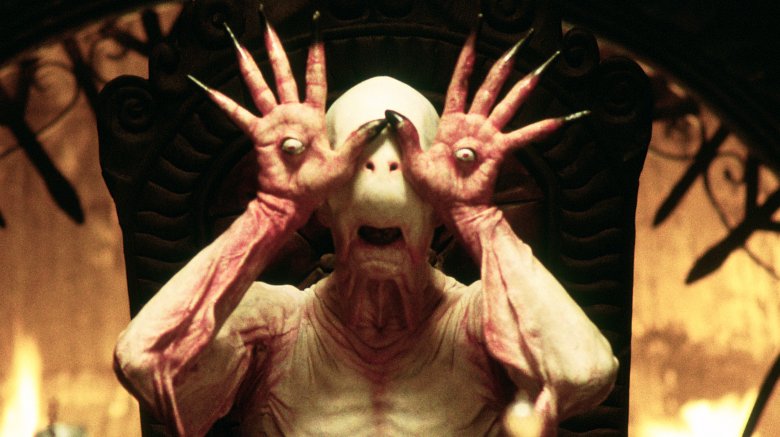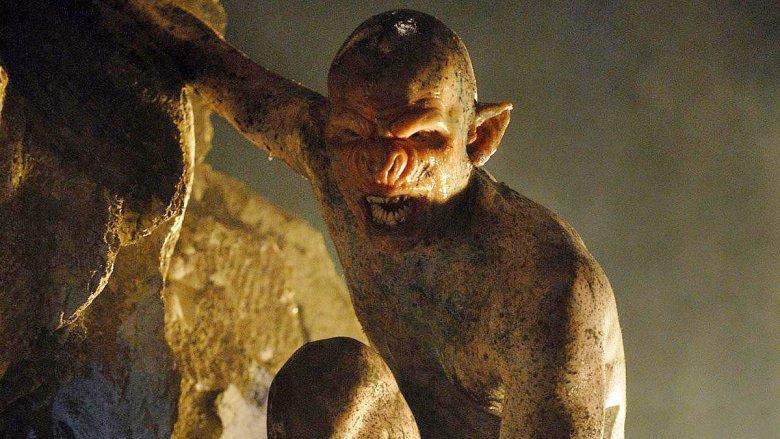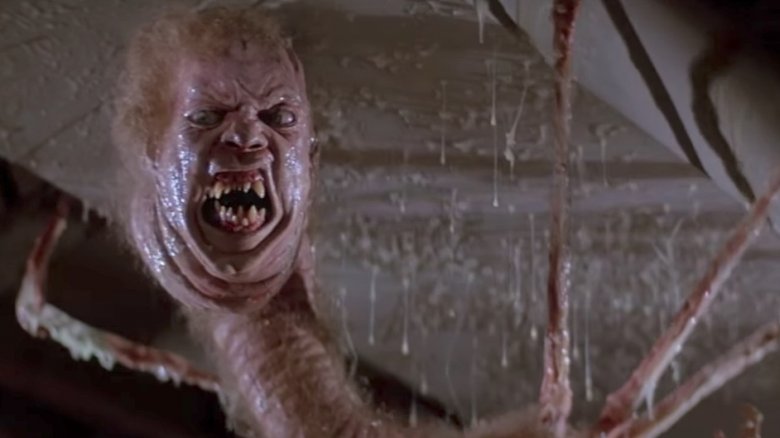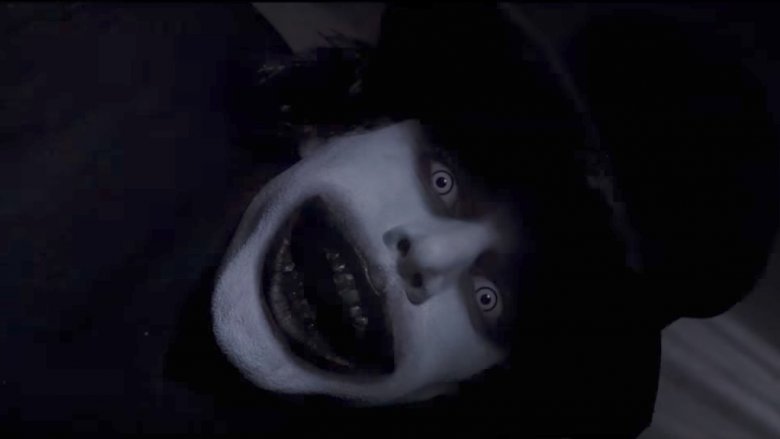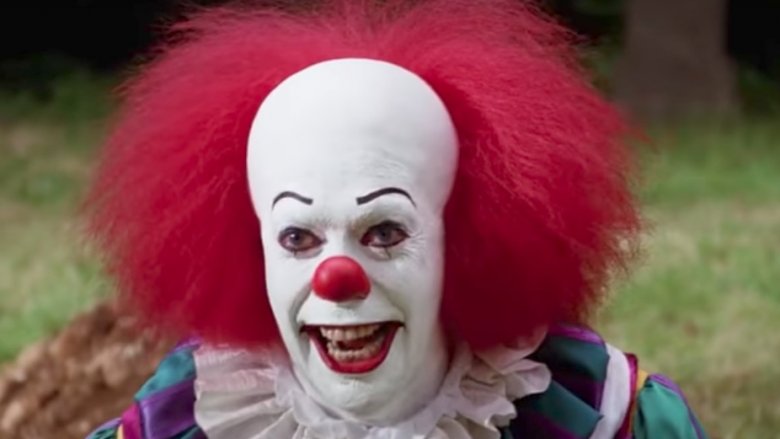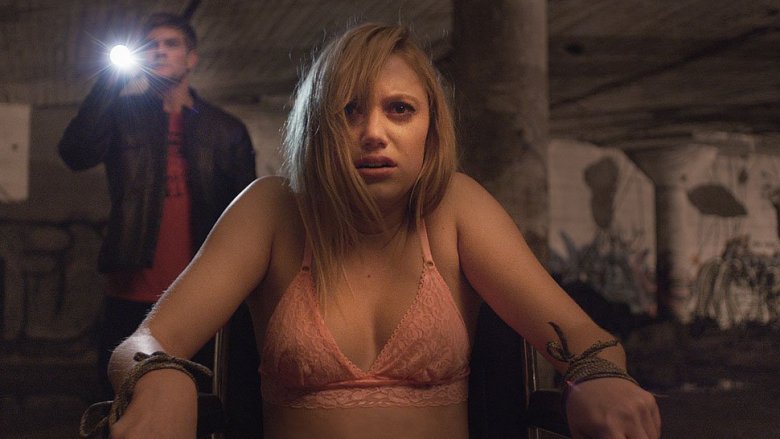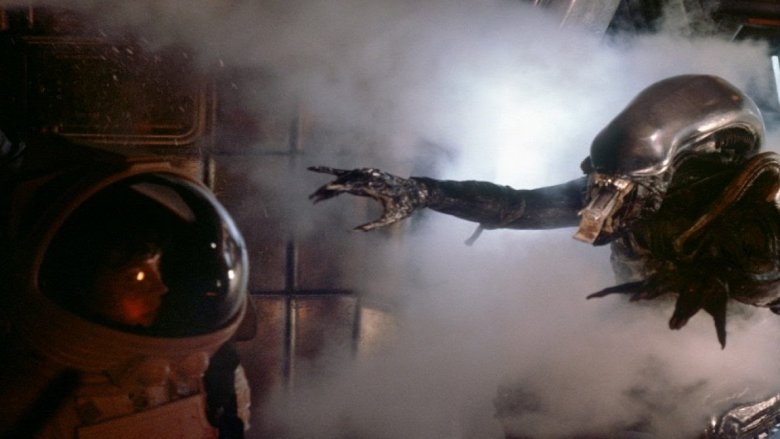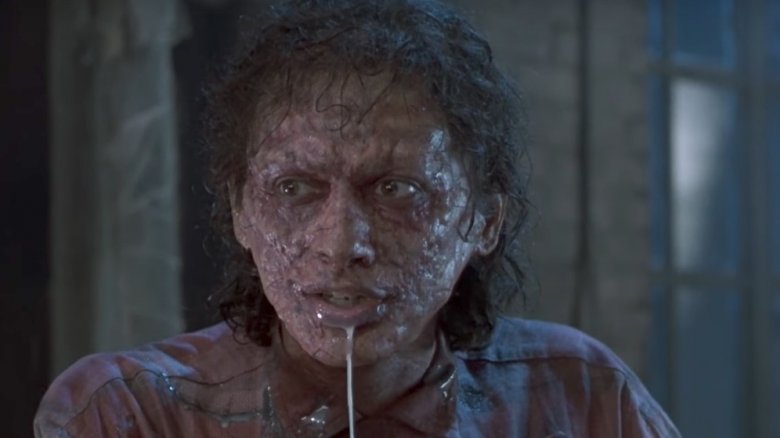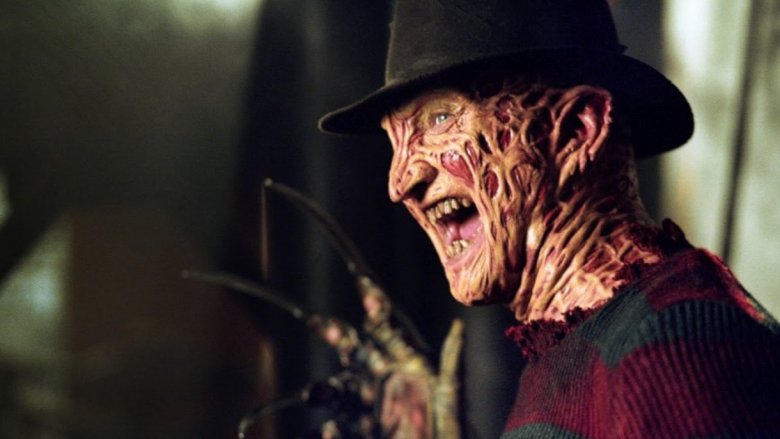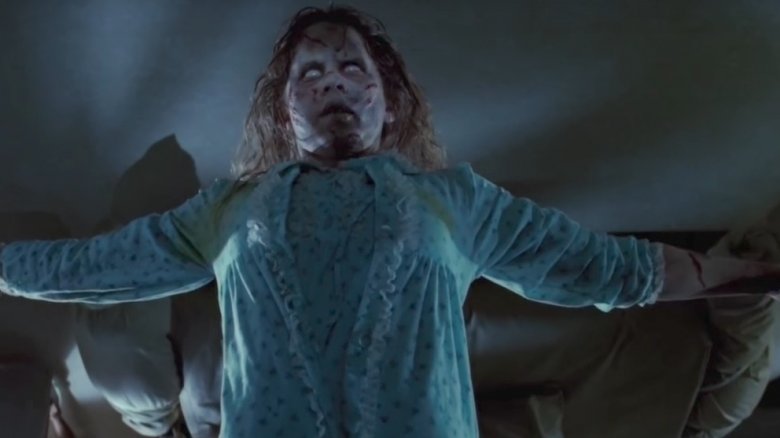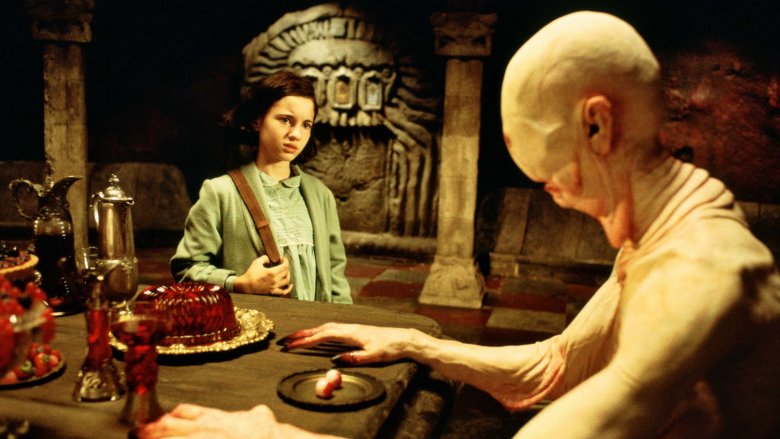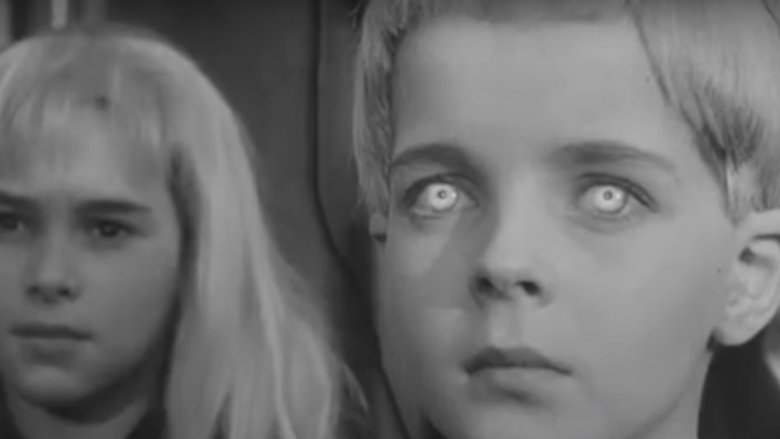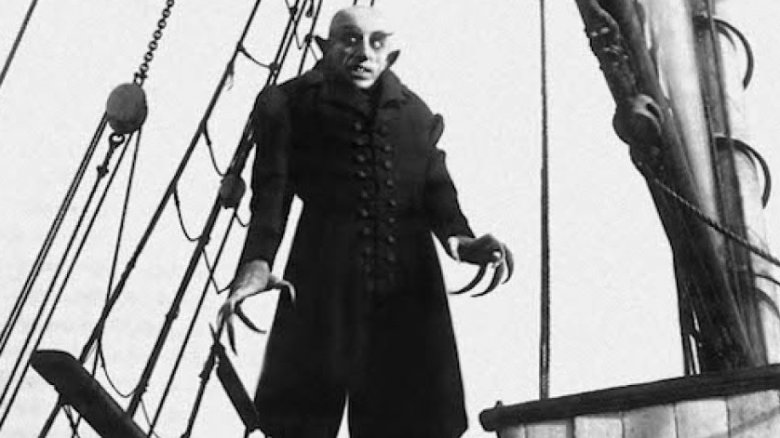Scariest Movie Monsters Of All Time
The best movie monsters stay with you long after the end credits roll, lingering in your mind's eye while you're lying in bed doing everything you can not to think about those spine-chilling creatures. Jump scares might get you in the moment, but a truly frightening monster will stay with you forever—and these are some of our all-time favorites.
The Descent (2005)
Spelunking is insane and no one should do it—especially in horror movies, where you're bound to run into anything from cannibalistic former friends (pretty good, all things considered) to horrifying rat creatures who treat you like a Meals on Wheels (this is the worst-case scenario). The Descent features a group of women going caving, and it's hard to think of any other movie that works so completely as an anti-tourism ad. It's already an activity that places you deep into the cold, dark ground with no ability to call for help, and that's all before they run into a group of creatures that look like a gross mix of mole rats and vampires.
Part of the horror of The Descent is the darkness and enclosed space that the characters are trapped in, but the few glances of the creatures that viewers get is enough to know that they don't want to be anywhere near these horrible things. The creatures' ability to navigate the terrain so smoothly and with such immediately predatory behavior helps establish that this is not a place anyone wants to be. Moral of the story: stay out of holes in the Earth.
The Thing (1982)
Shapeshifters show up on this list a few times, and it's not hard to see why. Being completely unable to trust anyone (or anything) around you is bound to engender some terror, but even in that regard The Thing stands alone. Part of that is the incredible design from Rob Bottin (and a little help from special effects master Stan Winston), who brought the Thing to life in a viscerally, veiny fashion. Director John Carpenter takes a methodical approach to telling the story of a group of scientists trapped on an arctic base with a thing from another world. The location's isolation is important—they have no one who can help except each other, but one of them isn't what they appear to be.
While the paranoia might be terrible, the transformation scenes are even worse. The Thing's forms strike the brain as something fundamentally wrong, from the spider head to the dog form it takes, everything about it seems to leap out at the viewer as dangerous, like a crime scene made of knives and teeth.
The Babadook (2014)
You know a monster's scary when it manages to make a nonsensical phrase terrifying—The Bye Bye Man might have failed, but no one's arguing against The Babadook. The movie's heavily influenced by early 20th-century film styles (which have only become more unsettling in the intervening century), and the central creature's relationship to children's literature and old movies makes it feel like a thing outside of time. It feels almost primordial, as if this was the first thing cavemen feared when they were able to imagine a fear worse than tigers and wooly mammoths.
Director Jennifer Kent shoots around the Babadook for the first half of the movie, showing its presence through a horrifying children's book and suspicious coat racks, but it's the final scenes where the creature really becomes terrifying. It crawls on the walls like a black cockroach, letting out gargled screams as it tries to take a child.
When you're worried that there's something under your bed or in your closet, it's hard not think of the kind of pale-faced, thin, shadowy creature that The Babadook embodies.
It (1990)
Clowns are scary, but they weren't always terrifying—for years they were a staple of child-friendly entertainment and a common sight at circuses and carnivals. But by 1990 when It was released, the cultural context of clowns had changed. Poltergeist, Killer Klowns From Outer Space and real-life serial killer John Wayne Gacy had all combined in the public eye to make them suitably terrifying.
That makes it even more impressive that It still manages to flirt with two very true realities: We didn't always find clowns terrifying, and we absolutely do now. The monster in It is actually a predatory shapeshifter who takes the form of your worst fears, so it makes perfect sense that it would take the form of a scary clown. Tim Curry's performance as Pennywise/It is jocular and giggling, with nearly every scene riding the line between a classic clown performance and terrifying creature that wants to murder and eat little children. He's garish and grating, almost laughable, right up until the moment he starts popping blood-filled balloons and coming out of the walls to get you. It might not be the only reason we're scared of clowns, but it's definitely one of the most persuasive.
It Follows (2014)
No, not a sequel to It, but it does likewise involve a shapeshifting monster methodically stalking a group of young people. In the world of It Follows, there's a decidedly worse strain of STD than the usual bunch—one that summons a slow, methodical monster that shadows its victim unless they pass it on through sex, like a game of sexual Hot Potato. Once it kills its most recent victim, it starts back up the chain.
Part of the reason this monster landed on the list is the sheer paranoid fear it inspires in the viewer. If you didn't walk home from the theater looking behind you for anyone slowly, silently following you, then you're braver than we are. Plus, when it kills its victims, it's in some sort of horrible, back-breaking sex, sometimes even while wearing the face of its victim's parent. That's a bad way to go.
Alien (1979)
Ridley Scott's seminal science-fiction horror film is a classic for a reason, with deep themes and incredible cinematography. But mostly, it's also completely terrifying. The slow build-up to the initial egg attack, the infamous chestburster scene... all incredibly scary. But it's when the Alien grows up into its adult Queen form that the movie really becomes horrific.
The Alien (also called a Xenomorph) is as purely, viscerally unsettling as possible. Segmented and gaunt like a skeleton crystallized in obsidian, the Alien is a perfect representation of a dozen different universal fears: fear of insects, fear of predators, fear of sexual violence and disease, fear of acid (well, maybe they're not all universal)... it all comes together in Giger's absolutely horrifying design. Still, while Giger might have been a phenomenal concept designer, lots of credit is also due actor Bolaji Bodeji, the massively tall Nigerian man whose long, loping gait and Mantis-like posture added an insectoid aspect to an already terrifying look. The Alien movies have continued for decades now, but nothing beats the disturbing original.
The Fly (1986)
Insects are about as antithetical to the qualities that we use to define human life as you can get without becoming completely inorganic, and in David Cronenberg's The Fly, the central character's slow transformation into "Brundlefly," a fly/human hybrid, is about as skin-crawling as it gets. Part of that is Cronenberg's trademark themes of upsetting sexual desire and body horror, but the other part is just the sheer visceral fear of becoming something that is as fundamentally not you as you can imagine.
There's a sickness inside Seth Brundle, but it's not a disease—it's a bodily invader, a fly whose DNA is changing him into something inhumane and awful. When Brundle's jaw falls off and his true nature is revealed, it's as terrible as seeing a disgusting mirror of all the evil inside him, and almost as awful as Veronica's dream of delivering his maggot offspring. Wait, no, never mind. The maggot birth scene is definitely worse.
A Nightmare on Elm Street (1984)
Sequels may have diluted the original terror of Freddy Krueger from Nightmare on Elm Street, but it's hard not to be absolutely terrified by the concept of the first movie. A creepy burned man invading your sleep and using surreal dream logic to murder you at your most vulnerable all because of something that happened before you were even old enough to know what was going on? Absolutely horrifying. Add in the ambiguous nature of Freddy's actual crimes against the children (a rare moment of subtlety when it comes to violence from director Wes Craven), and Freddy's entire nature changes.
Is he sublimated guilt from childhood trauma? The growing understanding in puberty that your parents are just as flawed as you are and you might need to bear the guilt for their actions? Or is he just a terrifying demonic presence whose wisecracks and knife gloves are the signifiers of your death? Regardless, Freddy earns his presence on this list just for making a sweater and fedora combo horrifying—an outfit usually reserved for kindly grandfathers, not murderous dream monsters. Also, fun fact: that sweater is psychologically built to terrify you. Yes, really.
The Exorcist (1973)
The Exorcist is one of the all time best horror movies ever made, as relentlessly terrifying as it is a quiet meditation on the necessity of faith and kindness. Director William Friedkin might have made the strongest possible argument for Catholicism ever captured on film when he showed the world the demon Pazuzu, who possesses a little girl and makes her say horrible things no one should know, spitting profanities out like acid. Part of the horror comes from the sheer viciousness with which Linda Blair plays Pazuzu—it's hard not to see the young girl as a genuine embodiment of evil.
While later exorcism films would dabble with the uncertainty of whether the victim is truly possessed or just insane, The Exorcist leaves no doubt that evil is alive and well in the world.
Pan's Labrynth (2006)
Guillermo del Toro has a bit of a reputation for loving the practical special effects and old school monster designs of Hollywood, but The Pale Man in Pan's Labyrinth might be his best work yet. It's the kind of unsettling oddity that works perfectly in Pan's Labyrinth when the viewer's never quite sure if what they're seeing is real, or just the delusion of a pitiful child in a bad situation.
The movie doesn't dwell on the Pale Man overlong—he's just one part of Ofelia's quest—but his unsettling appearance will stay with the viewer long after the movie. The horror of the Pale Man comes from the mystery of the design. Why is such a thin creature dining on a massive buffet? Why does it use its hands to see? Does del Toro want to give me nightmares? The answer to that last question, by the way, is a definitive yes.
The Village of the Damned (1960)
Children can be terrifying all on their own—their youth and naivete make them almost naturally disposed to voicing ideas that society would prefer they didn't. It only gets worse if children have psychic powers and a hivemind enacting all sorts of horrible ideas. That's the premise of Village of the Damned, a movie in which a group of children emerge from the womb with eerie hair and psychic powers.
The children's' lack of emotion as they kill is frightening enough, but the real horror comes from the question of why they're doing it at all. Their whims are as difficult to understand as most children's behavior, except significantly more bloodthirsty. With their strange hair and powerful abilities, they almost seem like the next step in human evolution, but they're decidedly more Magneto than the X-Men in terms of mutants.
Nosferatu (1922)
Count Orlok is the oldest entry on our list, but sometimes you get it right the first time. He's everything you could want in a movie monster: his gnarled teeth and sharp fingernails mark him as a dangerous predator, while his giant eyes and bald head look like a disgusting human-shaped rat or bat. We haven't even gotten to his jerky movements, which look like stuttering footage of some alien creature, or the violent lust in actor Max Schreck's eyes in every scene.
There's an entire separate horror movie about the unsettling terror of working with anyone who could embody Count Orlok (Shadow of the Vampire), but nothing can live up to the original Nosferatu. As terrifying now as he was almost 100 years ago, Count Orlok set the bar high for movie monsters.
